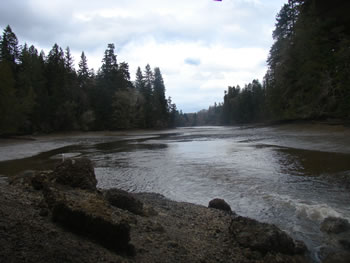“The shoe experiment” – testing various disinfectants for sanitizing the bottoms of shoes
gary.maguire”The shoe experiment” – testing various disinfectants for sanitizing the bottoms of shoes
Students from Pierce College, Puyallup, investigated whether some commonly used disinfectants are able to kill P. ramorum inoculum transported on shoes. It is a common practice to spray shoe soles with a disinfectant when leaving a P. ramorum positive nursery or lab where P. ramorum is studied, but there has been little research showing which disinfectants are effective in reducing inoculum.
In this study, three types of shoe material and six treatments were tested. Three of the treatments were effective in destroying P. ramorum inoculum, however this was decreased in the presence of soil. Therefore, removing soil from shoes before spraying with disinfectants is recommended.
Contact: Gary Chastagner, 253-445-4528 | WSU Puyallup Research & Extension Center, 2606 West Pioneer, Puyallup, WA, 98371-4998 USA
Last updated January 2, 2013




























